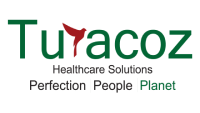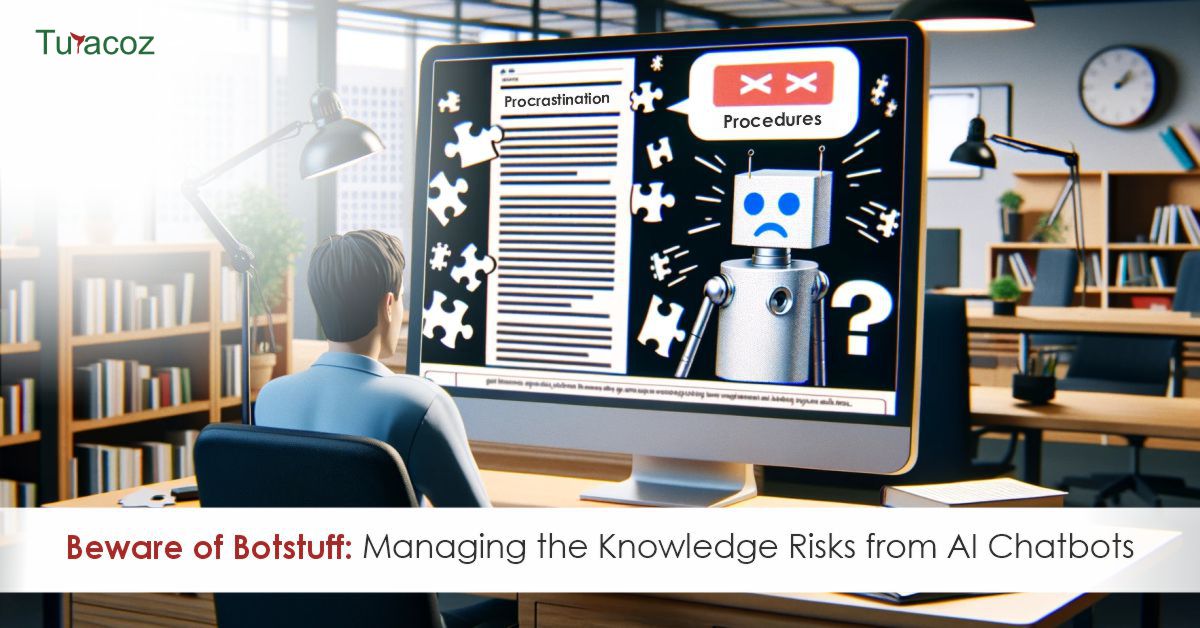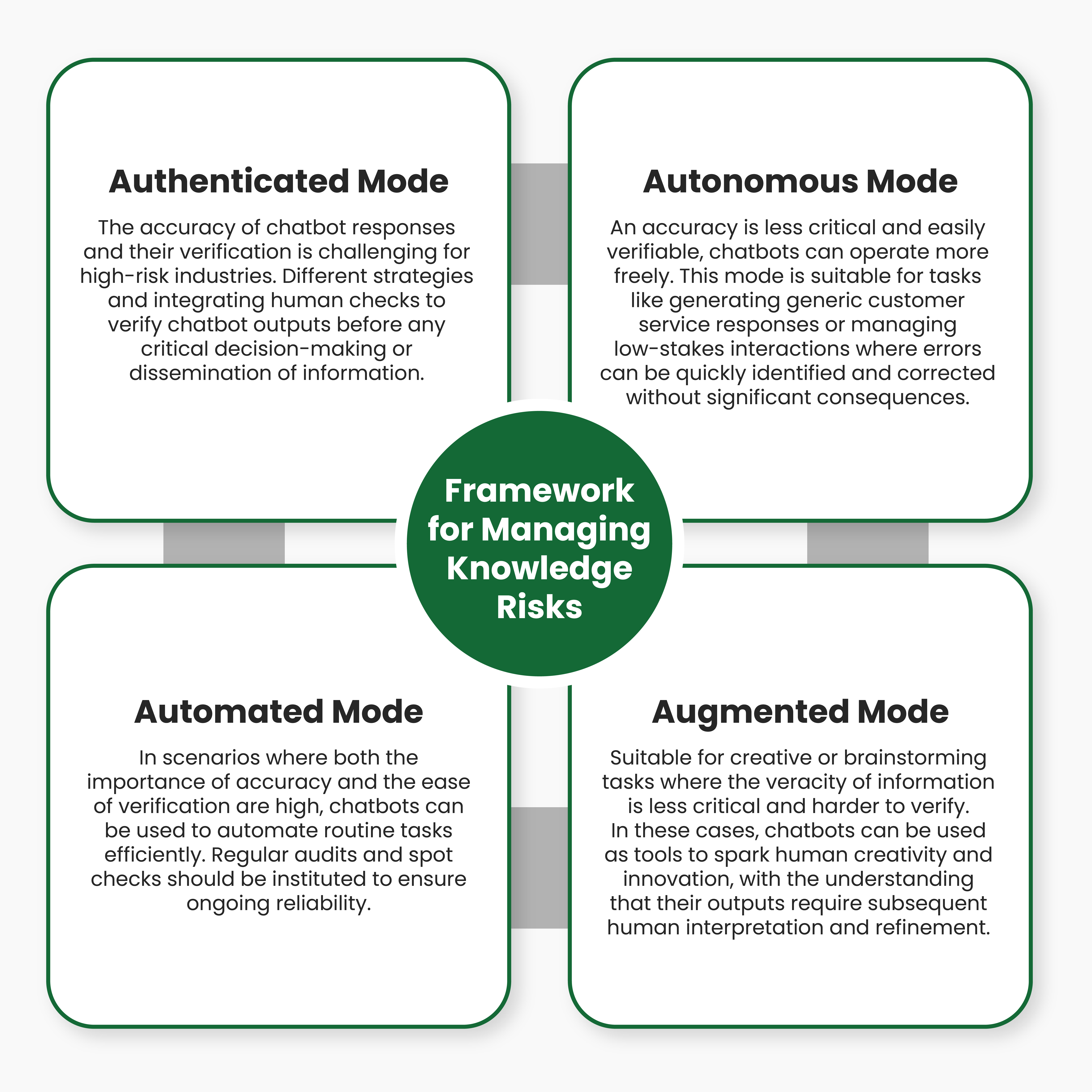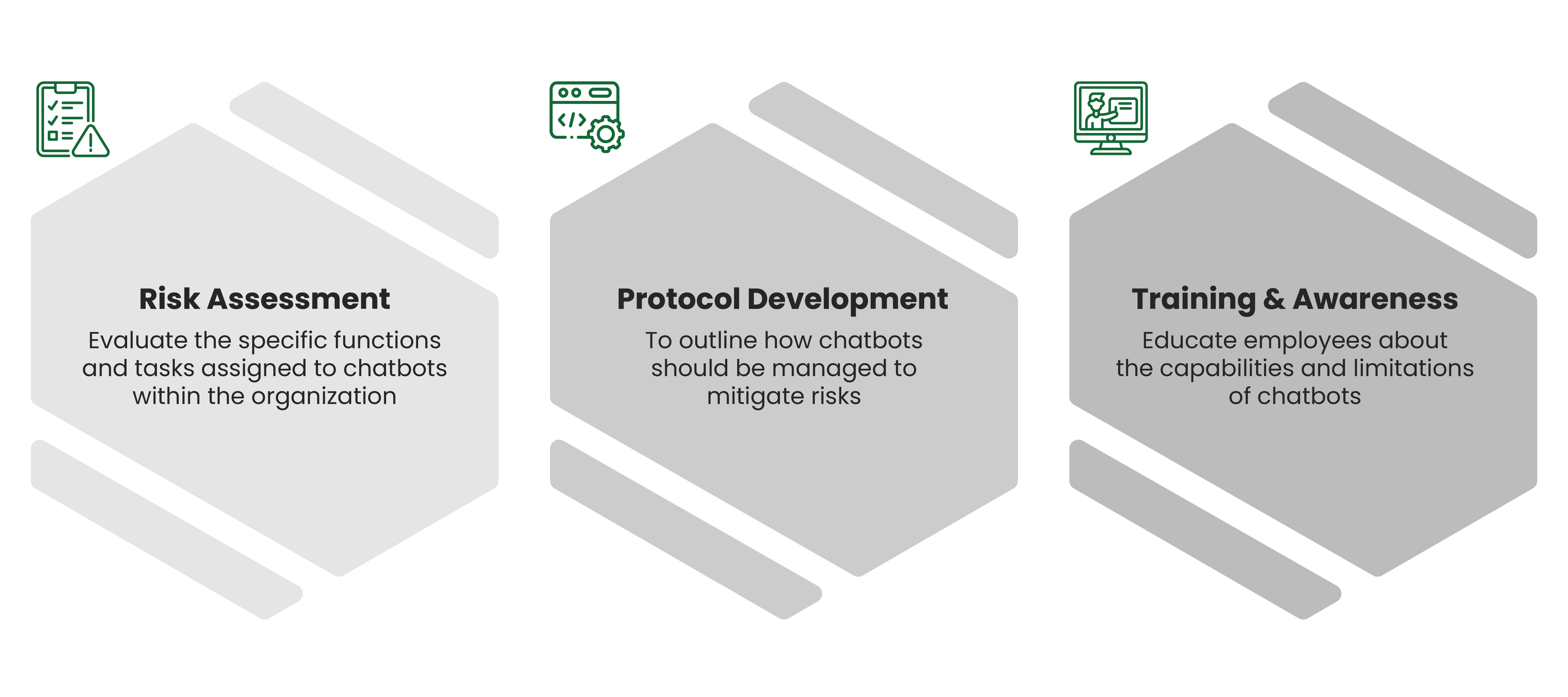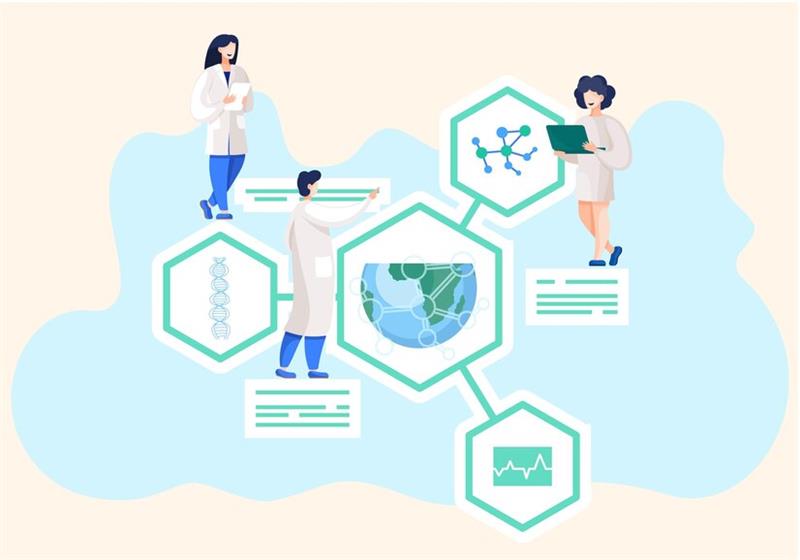In the digital era, AI-driven chatbots have become ubiquitous, transforming how we interact with information and automate processes across various sectors. From customer service to content creation, chatbots, powered by advancements in large language model (LLM) technology, are reshaping the interactive landscape. However, the rapid integration of these tools into daily operations comes with its own set of challenges, particularly concerning the accuracy and reliability of the information they generate. This blog explores the concept of “botshit”—the misleading or inaccurate content produced by chatbots—and offers strategies to manage these knowledge risks effectively.
Understanding the Challenge of Botshit
“Botshit” refers to instances where chatbots, despite their sophisticated algorithms, generate coherent yet factually incorrect or misleading content. This phenomenon arises because chatbots do not truly “understand” the data they process; rather, they predict responses based on patterns identified in their training data. Consequently, this can lead to what is known as “hallucinations,” or responses that, while sounding plausible, are entirely fabricated or distorted.
The risks associated with botshit are not trivial. They can range from minor inaccuracies that confuse major errors that could potentially lead to financial loss, reputational damage, or even legal challenges. As such, identifying and mitigating the epistemic risks of chatbot interactions is crucial for organizations that rely on these technologies for delivering critical information and services.
Framework for Managing Knowledge Risks
To effectively manage the risks posed by AI chatbots, organizations can adopt a structured framework that categorizes chatbot usage based on the importance of response accuracy and the feasibility of verifying these responses. Here’s how organizations can navigate these risks across different scenarios:
- Authenticated Mode: This mode applies when the accuracy of chatbot responses is critical, and verification is challenging. High-risk industries such as healthcare, finance, and legal often fall into this category. Strategies include implementing stringent validation processes, maintaining rigorous oversight, and integrating human checks to verify chatbot outputs before any critical decision-making or dissemination of information.
- Autonomous Mode: When accuracy is less critical and easily verifiable, chatbots can operate more freely. This mode is suitable for tasks like generating generic customer service responses or managing low-stakes interactions where errors can be quickly identified and corrected without significant consequences.
- Automated Mode: In scenarios where both the importance of accuracy and the ease of verification are high, chatbots can be used to automate routine tasks efficiently. However, regular audits and spot checks should be instituted to ensure ongoing reliability, such as in data entry tasks or report generation where accuracy is paramount.
- Augmented Mode: Suitable for creative or brainstorming tasks where the veracity of information is less critical and harder to verify. In these cases, chatbots can be used as tools to spark human creativity and innovation, with the understanding that their outputs require subsequent human interpretation and refinement.
Implementing the Framework
Deploying this framework involves several practical steps:
- Risk Assessment: Evaluate the specific functions and tasks assigned to chatbots within the organization to identify potential risk areas.
- Protocol Development: For each category of chatbot use, develop specific protocols and guidelines that outline how chatbots should be managed to mitigate risks.
- Training and Awareness: Educate employees about the capabilities and limitations of chatbots. Ensure they understand how to interact with chatbot technology effectively and how to escalate issues when inaccuracies arise.
Technological and Organizational Guardrails
In addition to the strategic framework, establishing both technological and organizational guardrails is essential to safeguard against the misuse of AI-generated content:
Technological Guardrails: Implement advanced data verification tools, enhance the transparency of chatbot decision-making processes, and ensure that AI models undergo regular updates and audits to improve their accuracy and reliability.
Organizational Guardrails: Develop clear policies and guidelines that dictate the acceptable use of chatbots. These policies should address ethical considerations, data security, and the alignment of chatbot deployment with overall organizational objectives and values.
Supplementing Human Intelligence
Generative AI like ChatGPT and Claude represent a powerful form of intelligence augmentation that can greatly enhance human productivity and creativity. But like any tool, they have limitations that must be clearly understood and mitigated against when appropriate.
By taking a thoughtful approach that combines the speed and assistance of AI with human judgment, oversight, and domain expertise, we can harness the incredible benefits of language models while managing the inherent knowledge risks and gaps in their training.
The most effective uses of generative AI will involve symbiotic collaboration between humans and machines, with each complementing the other’s strengths. Humans provide contextual reasoning, real-world validation of knowledge, and guidance for the AI’s knowledge acquisition. In turn, the AI provides a multiplier on human intelligence by rapidly generating ideas, analysis, and facilitating tasks.
Looking Ahead
As AI technology continues to evolve, so too will the strategies to mitigate its associated risks. Continued research and development will be critical in refining AI models to reduce errors and enhance their understanding of context and nuance. Furthermore, as regulatory frameworks around AI usage mature, organizations will need to stay informed and compliant with new guidelines and standards.
Conclusion
AI chatbots offer significant benefits, from enhancing operational efficiency to enriching customer engagement. However, managing the knowledge risks associated with their use is crucial to avoid the pitfalls of botshit. By implementing a structured risk management framework and establishing robust guardrails, organizations can harness the power of AI chatbots responsibly and effectively, ensuring that these tools augment rather than undermine the integrity of their operations and decision-making processes.
As these models continue to evolve and learn, the human-AI partnership will become an increasingly powerful combination for solving problems and expanding our collective knowledge and capabilities.
